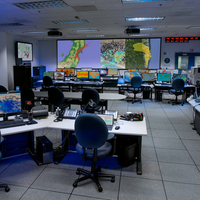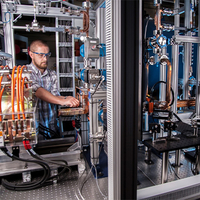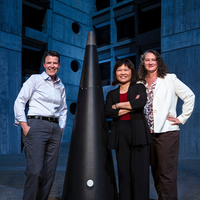OUR RESEARCH
Nuclear, Chemical and Isotopic Science and Technology
What We Do
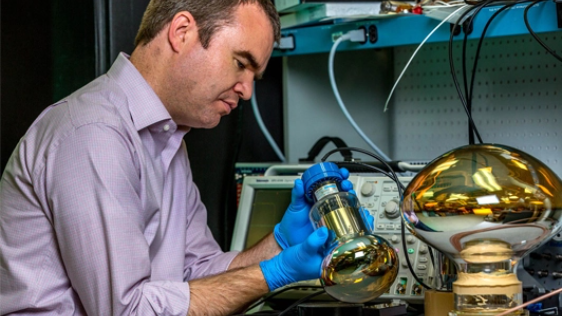
Who We Are
Our multidisciplinary teams include nuclear and particle physicists, chemists and forensic and computer scientists supporting missions such as nuclear deterrence, counterterrorism, environmental remediation and space exploration. Meet some of the people who work in nuclear, chemical and isotopic science and technology:
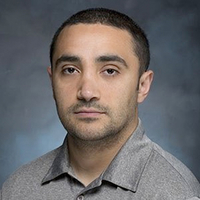
Narek Gharibyan is a deputy group leader for the Laboratory’s Nuclear and Radiochemistry Group. He supports experimental nuclear science at the National Ignition Facility, where he collaborates with colleagues to develop radiochemistry diagnostic techniques for analyzing samples collected from high-yield laser shots. In addition, he leads/co-leads research projects in pre- and post-detonation nuclear forensics, supporting mission-relevant aims across the national security complex.
Narek also led a project funded by LLNL’s Laboratory Directed Research and Development Program, where the research team developed a prototype chemistry-on-a-chip platform for field-deployable nuclear forensics. The device offers scientists an assessment tool for rapidly identifying actinides, or other radioactive elements of interest, from post-detonation nuclear debris.
Before joining LLNL, Narek performed undergraduate research at Lawrence Berkeley National Laboratory and interned at Los Alamos National Laboratory’s Seaborg Institute. He now enjoys giving back to the nuclear forensics community and has mentored student interns who are part of the Nuclear Forensics Summer Program, hosted by LLNL’s Seaborg Institute.
Narek holds a Ph.D. in radiochemistry from the University of Nevada, Las Vegas, and a B.S. in chemistry from the University of California, Berkeley.
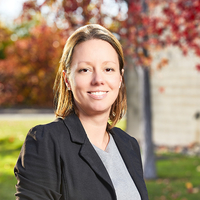
Nuclear engineer and analytical chemist Ruth Kips travels around the world working with allied nations to advance their nuclear forensic science and capabilities — and counter risks of nuclear smuggling. As the Lab’s associate program lead for nuclear smuggling detection and deterrence, Ruth delivers workshops on the importance of nuclear forensics and collaborates with partner countries on sample analysis.
The workshops are part of the U.S. National Nuclear Security Administration (NNSA)’s Global Material Security (GMS) program, aimed at preventing terrorists from acquiring nuclear or radiological material.
“Including nuclear forensics in the GMS portfolio enhances its detection capabilities at border crossings, seaports and airports,” Ruth says. “If nuclear material is found outside of regulatory control, the partner country can determine what the material is and where it came from. Forensics experts can determine what it is, its intended use and the threat level.”
With a master’s degree in nuclear engineering, a Ph.D. in analytical chemistry, several years conducting research in uranium-particle analysis, and a stint at the International Atomic Energy Agency (IAEA) as an inspector verifying that countries adhere to nuclear nonproliferation treaty commitments, Ruth holds a wealth of experience in each stage of the nuclear fuel cycle.
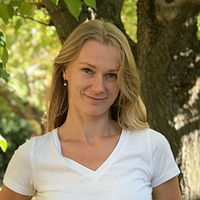
Kay Kolos McCubbin was drawn to science and math from an early age. When she had the opportunity to visit a national laboratory in Germany and was exposed to purely scientific environments, she knew she would pursue a career in scientific research.
Kay is a research scientist in the Nuclear and Chemical Sciences Division. Her work involves innovative techniques that take advantage of radioactive beams and state-of-the-art radiation detectors to perform detailed measurements of nuclear decays and reactions. For example, she worked on the development of a method to measure very precisely the probability of gamma-radiation emission from beta decays of fission products. Kay says, “I am very proud of my work on this project as it has an impact on basic science and the Laboratory’s mission, but also because it taught me how much work and patience precision measurements require.” Kay also appreciates the dynamic nature of the work at Lawrence Livermore: “Our work is ever-changing,” she says. “We utilize our knowledge to push science further and further, solve problems quicker and everything we learn along the way is very enriching.” She is a member of the Lawrence Livermore Laboratory Women’s Association and enjoys activities such as hiking, biking, running and playing tennis outside of work.
Kay received her Ph.D. at the University of Paris-Sud Institute of Nuclear Physics in Orsay, an M.S. in physics at the University of Jyvaskyla and an M.S. in physics and B.S. in physics at the University of Technology in Warsaw, Poland.
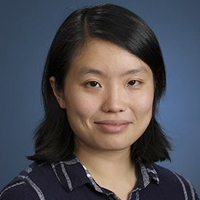
Wei Jia Ong joined the Laboratory as a Lawrence Fellow — a highly competitive postdoctoral position offered at Livermore. As a scientist in the Nuclear and Chemical Sciences Division, her research interests lie in nuclear astrophysics, particularly the nucleosynthesis of elements in the cosmos as well as nuclear reactions that take place atop or within accreting neutron star crusts. Wei Jia leads a Laboratory Directed Research Development project investigating the weak r-process (rapid neutron-capture process) nucleosynthesis. The project combines nuclear reaction rate measurements, computational modeling and presolar grain isotopic measurements in an interdisciplinary approach to test the viability of neutrino-driven winds in a core-collapse supernova as a source of heavy elements in the cosmos. In addition, Wei Jia is involved in collaborative radioactive beam experiments with scientists from Michigan State University’s new Facility for Rare Isotope Beams and Argonne National Laboratory’s Argonne Tandem Linac Accelerator System.
Wei Jia earned a Ph.D. in physics from Michigan State University and a B.A. in physics from Washington University in St. Louis.
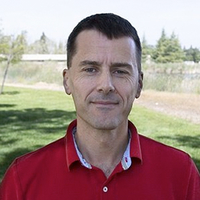
When he was growing up, Nicolas Schunck recalls always wanting to know ‘why’ things are the way they are. He says, “My desire to seek answers and bring a sense of order to the universe has inspired and fueled my scientific career as a theoretical nuclear physicist.”
Nicolas’s research for the Nuclear and Chemical Sciences Division in the Physical and Life Sciences Directorate focuses on the fundamental mechanisms of nuclear fission and the development of theoretical methods to describe the structure and decay of heavy atomic nuclei. He has more than a decade of experience in high-performance computing applications on leadership-class computers and is active in the development and exploration of machine-learning techniques to improve computational nuclear theory. For the last several years, Nicolas has served as principal investigator for the Fission in R-process Elements topical collaboration in nuclear theory, joining with five different institutions to better understand where and how heavy elements are formed in the universe. He has developed both a national and an international network of collaborations. Before joining Livermore as a staff scientist, he was a postdoctoral researcher at the University of Surrey (UK), Universidad Autonoma de Madrid and University of Tennessee.
Nicolas holds a Ph.D. in theoretical nuclear physics, an M.S. in nuclear physics and a B.S. in physics from the University of Strasbourg (France).
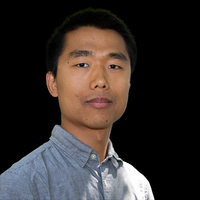
Jingke Xu felt inspired to become a scientist at a young age because he enjoyed pondering problems that may or may not have answers. “As a scientist, every day brings something new — sometimes exciting and sometimes challenging,” he says. “I also try to apply scientific thinking to everyday life, both at the technological level and at the sociological level.” As a father, he enjoys explaining science to a young daughter, who asks, “Why?” dozens of times a day.
While studying for his doctorate, Jingke worked on the detection of ghostly neutrinos from the Sun and the yet-to-be-discovered dark matter. Now, working as an experimental particle physicist in the Laboratory’s Nuclear and Chemical Sciences Division, Jingke develops new particle detection instruments and pushes existing technologies to their limits. He collaborates with scientists from universities and other national laboratories to hunt for rare particle interaction events. “LLNL provides a wonderful platform for me to pursue not only science but the applications of science,” he says.
Jingke holds a Ph.D. in particle physics from Princeton University and a B.S. in physics from the University of Science and Technology of China.
Our Latest News
Our Current Projects
Our research teams explore nuclear and particle physics, chemistry and isotopic signatures, developing cutting-edge tools to uncover new chemical signatures or study nuclear reactions to make the world a safer place.
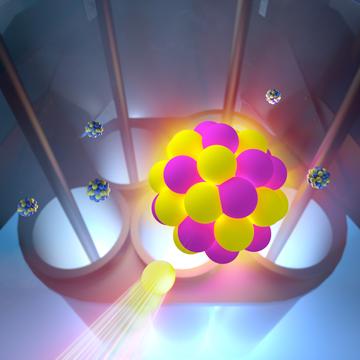
Analyzing Nuclear Reactions
We are developing techniques to harvest and purify rare, radioactive isotopes and use them for direct neutron-capture measurements to better understand the origins of heavy elements and increase confidence in the safety and effectiveness of the U.S. nuclear stockpile. Promising results are setting the stage for upcoming collaborative experiments aimed at producing and harvesting exotic radioactive isotopes — providing fundamental nuclear data that will enhance the predictive capability of nuclear physics simulations and enable researchers to better interpret nuclear events.
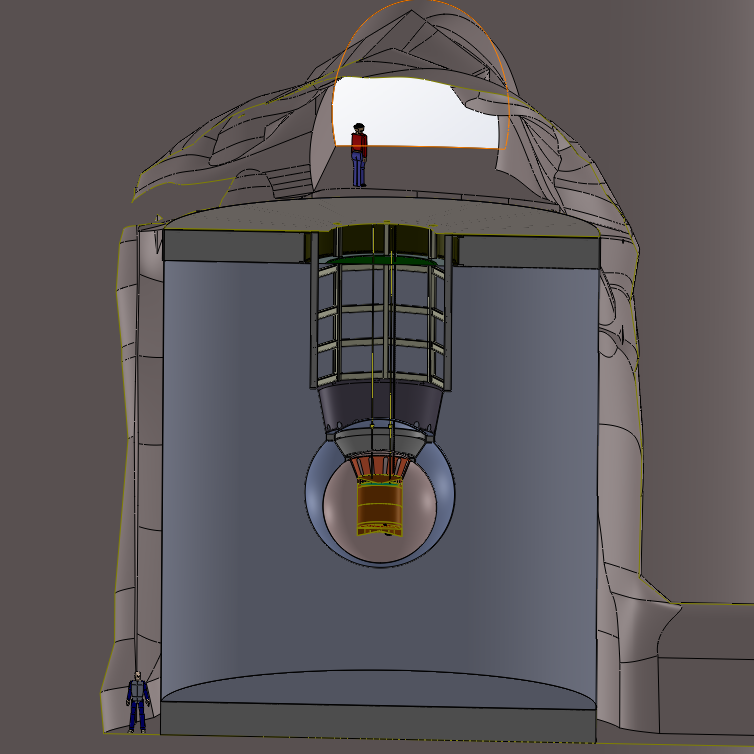
Studying the Behavior of Neutrinos
We study neutrinos—the lightest known particle, with almost no mass and no electrical charge. These elementary particles may help explain why matter survived in our early universe. LLNL scientists and colleagues from 35 institutions are teaming up on the nEXO project to develop a new, highly sensitive detector to explore the properties and behavior of neutrinos indirectly, by analyzing a radioactive decay process known as neutrinoless double beta decay.
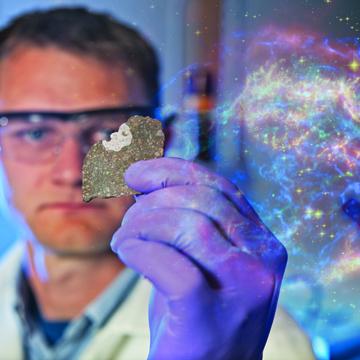
Cosmochemistry and Space Exploration
Our researchers study extraterrestrial materials to unravel the history of the solar system and our cosmic neighborhood. We are also adapting LLNL nuclear forensics technology for space exploration, and we developed one of the instruments that will be used during an upcoming NASA mission to explore the unique metal exterior of the Psyche asteroid. Our specially adapted gamma-ray spectrometer will measure the energy of gamma rays emitted from the asteroid’s surface to help determine the composition of its unique metal exterior.
Our Facilities, Centers and Institutes
The Laboratory is home to several state-of-the-art facilities and centers to help researchers tackle the hardest and most complex nuclear deterrence and homeland security missions.
CAMS
Center for Mass Spectrometry
CAMS researchers use diverse analytical techniques and state-of-the-art instrumentation to develop and apply ultra-sensitive isotope ratio measurements and ion beam analytical techniques.
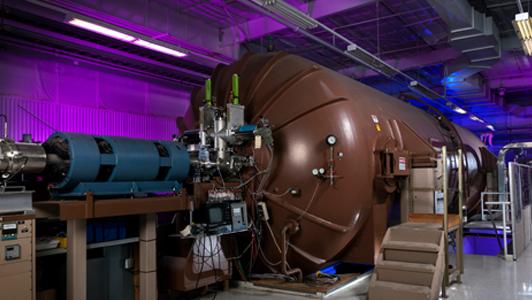
CFF
Contained Firing Facility
The Contained Firing Facility (CFF) handles large-scale, non-nuclear, hydrodynamic experiments with full containment of hazardous materials. Unique diagnostics record experimental results for nuclear weapons and explosives research and development.
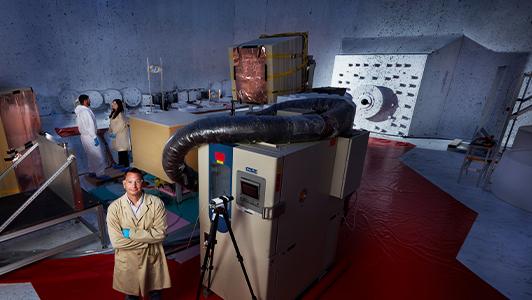
EMC
Energetic Materials Center
The Energetic Materials Center conducts research and development on the performance of high explosives in support of the Laboratory’s defense, nuclear deterrence and homeland security missions.
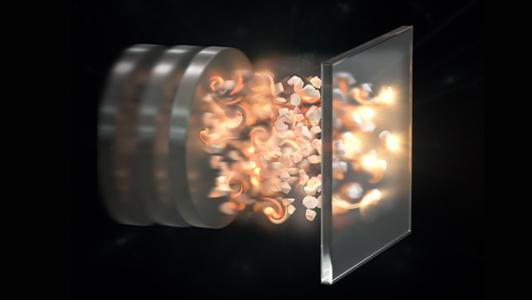
FSC
Forensic Science Center
The Forensic Science Center (FSC) is home to nationally recognized scientists and capabilities to prepare for, characterize and respond to chemical, biological, radiological, nuclear and explosive threats.
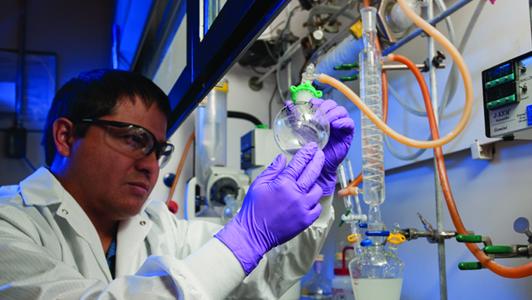
Seaborg
Glenn T. Seaborg Institute
The LLNL branch of the Seaborg Institute conducts collaborative research with the academic community in radiochemistry and nuclear science, contributing to the education and training of students, postdocs and faculty.
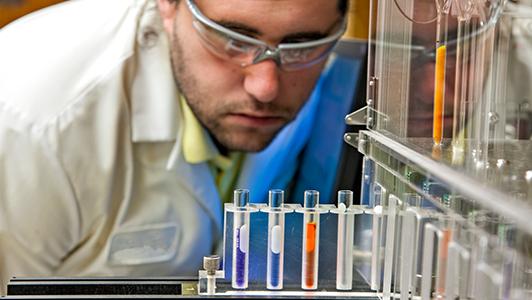
PE
Polymer Enclave
The Polymer Enclave accelerates the design-to-deployment of additively manufactured weapon components critical to modernizing the U.S. nuclear stockpile.
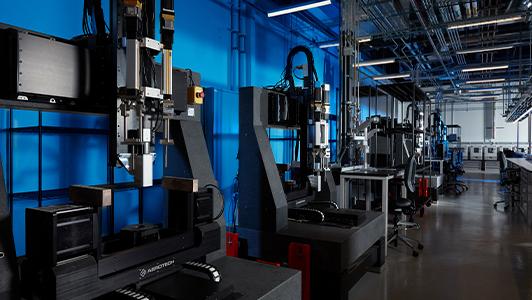
Related Organizations
World-class science takes teamwork. Explore the organizations that contribute to our nuclear, chemical and isotopic science and technology research by clicking the images below.
Join Our Team
We offer opportunities in a variety of fields, not just science and technology. We are home to a diverse staff of professionals that includes administrators, researchers, creatives, supply chain staff, health services workers and more. Visit our careers page to learn more about the different career paths we offer and find the one that speaks to you. Make your mark on the world!

